NAMRA researcher

Summary
· This project proposes a novel method, incorporating next-generation sequencing of bacterial communities, to unravel complex feeding links between fish and their prey items.
· The project will focus on key fish species from freshwater, estuarine and coastal-marine habitats in the Alligator Rivers Region.
· The project will extend existing NERP and NAMRA-funded research on productivity dynamics and trophic ecology, integrating expertise among partner institutions.
Introduction & aims
Seasonal flows drive food web structure and function in tropical rivers, by regulating connections between marine, estuarine and freshwater habitats and driving cyclic changes in productivity. As highly-mobile consumers, fish play an important role in the transport of energy both vertically (up and down food chains) and horizontally (up and down river systems) at spatial and temporal scales ranging from small (across microhabitats over days to weeks) to large (across landscapes over months to years). Previous research has documented strong relationships between river flows, habitat and food availability (Rayner et al. 2008), fish feeding (Rayner et al. 2009) and food web function (Rayner et al. 2010). However, drawing definite and meaningful conclusions from traditional methods, particularly stable isotope data has been, and remains, challenging.
The current project proposes a novel approach with the potential to provide far greater resolution of trophic links between important fish species and their prey. Bacteria associated with dietary items are known to colonise the digestive tract of consumers, where they go on to comprise a large portion of the total microbial community and influence host health and growth. Ribosomal tag pyrosequencing is a next-generation molecular technique that can be used to identify the bacterial species present in a sample. We propose to use this method to trace bacterial taxa through multiple trophic levels, by sequencing samples from fish guts and comparing them to samples from prey items collected in different habitats.
The aims of the project are to:
1. Characterise the bacterial gut microbiota of fish species with varying phylogeny (mouth and gut morphology) and trophic characteristics (diet, feeding behaviour and trophic level);
2. Reconstruct trophic links between fish and their prey by tracing bacterial taxa and communities through multiple trophic levels, across habitats; and
3. Communicate research results to the general public and stakeholders using visual media, including photography and video.
The study will be conducted in the Alligator Rivers Region, an iconic system with the seasonal flow regime typical of Australia’s tropical north. Three key fish species will be targeted: barramundi, catfish and mullet. These species are all economically, culturally and/or ecologically important. However, they differ substantially in their morphology, occupy different microhabitats and trophic positions, and undertake contrasting movements between fresh, estuarine and salt waters. Good ecological data on the region are available from previous projects, particularly from eriss and the Tropical Rivers and Coastal Knowledge program, which provide a sound context for the present study.
Collaborations
This project will complement and bring a totally new dimension to two existing NERP-funded research projects and integrates expertise among three NAMRA partner institutions. It combines several disciplines and is designed to take full advantage of the North Australian Marine Research Alliance, combining the technical capacity of AIMS, NT Fisheries and CDU. The project will involve direct inter-disciplinary contributions from Michael Douglas & Karen Gibb (CDU), David Parry & Claire Streten-Joyce (AIMS), and Thor Saunders (NT Fisheries).
The project will also build on the infrastructure, support and collaborative networks of both the NERP North Australian and NERP Marine hubs. This will bring collaboration with Stuart Bunn & Brad Pusey (Griffith University), Anthony Chariton (CSIRO) and Tiffanie Nelson (potential NERP-funded postdoc). The collaboration with the NERP hubs also brings access to additional technical support through shared fieldwork, as well as access to communication and stakeholder networks.
Collaboration with staff in the NERP hubs will build critical mass of NAMRA partners and establish a vibrant and productive research team based in Darwin working on issues related to connectivity between marine and freshwater ecosystems. This team will include key research staff at CDU, NT Fisheries and AIMS as identified above, as well as a post-doctoral fellow working on shark movements (Peter Kyne) and a postgraduate student working on the movement of crustaceans (Peter Novak). The project could also support two related postgraduate student projects.










